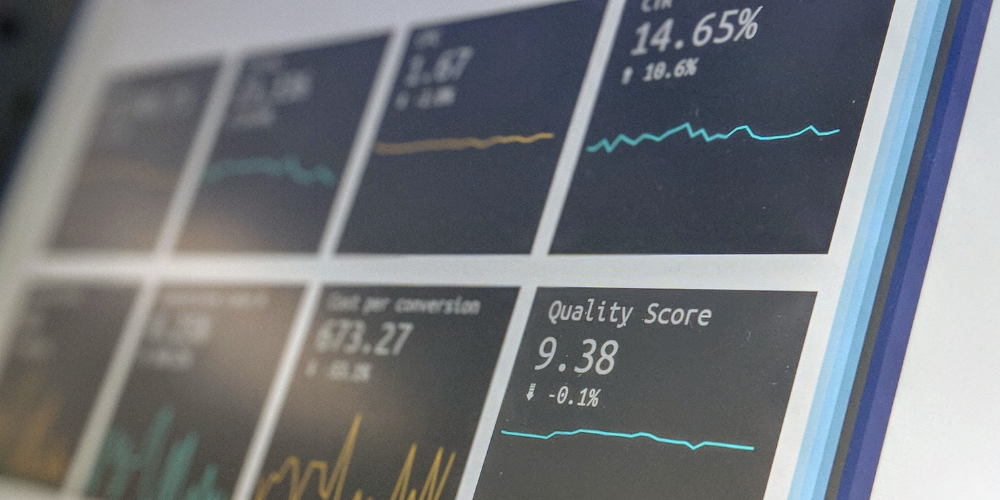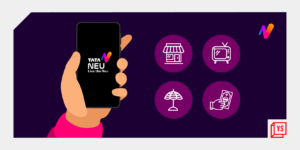Without the right approach, leveraging social media can feel like a constant source of friction. Any marketer has heard plenty about the high ROI that can be extracted from the social channels – in B2C or B2B – but there are still countless companies out there that are having to forgo that ROI. Why? Constraints on time and resources.
True, social media is capable of draining every second of your time – and, even then, the reward can be elusive. But it doesn’t have to be that way. Automation in all the right places – processes that guarantee the highest reward possible for your efforts – are both possible, provided your approach is right.
The strongest sign that you’re getting it right? A scalable social media publishing platform – one that integrates all the other marketing and team management tools you depend on – that automates all those slow, protracted tasks and focuses your attention on the most pressing parts of inbound marketing.
Social media is a wide world, but your vision can be focused on only the most important details. Here’s how.
Jump to Section
What is marketing automation?
Automation is all about taking the human element out of repetitive, monotonous, labor-intensive work, freeing up teams to take on the more intellectually and creatively demanding aspects of a job (content creation, say, or direct customer contact). In marketing, automation in the right places is now essential to realizing the full ROI of any marketing strategy, including social media.
Why? Because, while social media is the B2B digital marketer’s playground when it comes to reaching highly targeted audiences and moving leads through the funnel, some of the elements of social media management represent a drain on your team’s time and creativity.
Marketing automation is the solution. Automating the processes that your team doesn’t need to be doing means maximizing social media ROI, but not at the cost of your team’s manpower.
Here are the core parts of social media marketing that can be automated on the right AI-powered social media management platform.
Scheduling content
The most successful social media content publishing strategies are built on consistent and regular posting, which means that the most successful brand social media accounts are those that are backed by a content publishing schedule, and not a do-it-on-the-fly philosophy. When you start to plan social media posts, you start to get tactical.
Automating this social posting schedule frees up your team’s hands for other, more important parts of social media management. When content is created, it can be assigned to a specific campaign, flagged for approval, then moved along the schedule. Any potential gaps can be identified ahead of time, and the entire team can enjoy clear visualization of your social media content marketing campaign.
At Oktopost, this automation is handled by a powerful AI – one that makes it possible to schedule and generate content in a matter of seconds, creating space within your team for more technical parts of the job.
Curating social media data
Measuring your social media ROI and curating a 360° view of your social media presence is just as important as having a social media presence in the first place. Without those comprehensive insights – sentiment, share of voice, conversions, impressions, clicks – you can’t continue to (constantly) evolve your strategy alongside the (equally constant) evolution of social media itself.
Again, the main obstacle between marketing teams and the full utilization of social media data is time. It takes time to analyze and to extract insights – unless you automate the process through the right social media analytics platform, ensuring that the best possible insights are cherry-picked for you and curated in reports that clearly demonstrate ROI.
Utilize AI for social listening
Social listening is a powerful tool for understanding your audience and your competitors, and for optimizing your social media campaign according to trends and conversations, but its importance is frequently overlooked by businesses – even businesses who are fully cognizant of the potential ROI. Why? Because it’s time-consuming. More than that, it’s a time-drain, particularly if you are social listening in real-time (as you should be).
With AI, however, that labour can be lifted from your team’s shoulders. Social listening insights can be relayed to your social media dashboard as and when they happen, from time-sensitive brand mentions to new trends impacting your niche. With these insights, your team can focus on action – responding to those insights and building upon thought leadership through quality content creation – rather than draining their time and energy on the legwork.
What is a Lead Scoring System?
Lead gen and conversion is never a walk in the park. You’ve likely heard the phrase ‘plenty of fish in the sea’ before, and that’s both a good thing (we want all the leads, after all) and a hindrance (we don’t want to lose hours sorting those leads).
After all, inbound marketing is like a wide net cast into the water. Once you start to reel that net back into the boat, you’ll see all sorts of leads – some that are ready to be converted straightaway, and others that are still unsure whether they picked the right net or not.
But enough with the metaphor. Your fish – I mean, your leads – all need to be dealt with slightly differently, and some are a lot more time-sensitive than others. So how do you know where to start?
By scoring leads based on a set of criteria that enable you to sort those that need your immediate attention from those that can be left to simmer a while first. That way, your sales team aren’t wasting time in the wrong places, all the while letting those really good leads slip through their fingers.
What are the criteria for lead scoring?
There are many different ways to score leads, so there’s no one right way to do it.
You don’t need hundreds of criteria to sort the good from the bad, the worthwhile to the not-worth-your-while. In fact, many of the most successful lead scoring models comprise just 2 to 4 criteria. That’s it – that’s all you need to identify the most valuable leads.
The criteria you use can stem from the client’s behavior – whether they’ve filled out a request for a consultation (worth a lot of points to any sales team), or clicked through to your site via a marketing email or social media post (also good points scorers). They could also stem from what you know about the company – whether they fit into your target demographic, industry, and size. If you can apply a selection of criteria from those categories to each inbound marketing lead before they’re passed onto sales teams, you can avoid a lot of wasted time on leads that’ll never bear fruit.
One thing’s for sure – settling on which criteria best serve the needs of your business should be an open, cooperative conversation between marketing and sales teams. Both sides need to be very familiar with their target audience, but both will also bring unique perspectives to the table that, together, create the strongest picture possible.
How Does Lead Scoring Maximize Social Media ROI?
Social media is a powerful tool for inbound marketing. In 2018, Forbes found that 83% of B2B executives will be influenced by social media when choosing vendors, which goes to show how important social media content publishing is for getting leads into the funnel.
By now, most of us are aware that realizing the full ROI social media promises is about more than having an account and posting every once in a while. The great thing about social media is that it generates an abundance of insights and metrics; the pay-off is that you’ve got to use those insights and metrics to hone your strategy, or consistently fall short of getting the ROI you want and need.
Lead scoring can (and should) use many of the insights social media can provide, particularly with regards to behavior – how (and how much) a lead interacts with your posts, whether they have also been interacting with competitors, what prompted them to click-through. This is putting those insights and ROI metrics for social media to practical use and, in return, boosting your conversion rate for leads generated through your channels.
Automated marketing and lead scoring are two different practices, but they both serve the same key goal: to be able to clearly identify and present the ROI from your social media marketing strategy without eating into your team’s time and resources. If you can master both, then you can boost collaboration between sales and marketing, and enjoy much stronger results from your inbound marketing.
Getting the very most out of your social publishing strategy isn’t dependent on you draining all your limited resources on managing those channels. Automation through a social media management platform means prioritizing the more specialized aspects of publishing on social media and community management, without missing out on the insights and benefits that come from the more repetitive, time-consuming parts of the job.
With the tools and criteria for leads, you can free up those hands for more specialized tasks, and still see 360° benefits from your social channels.










